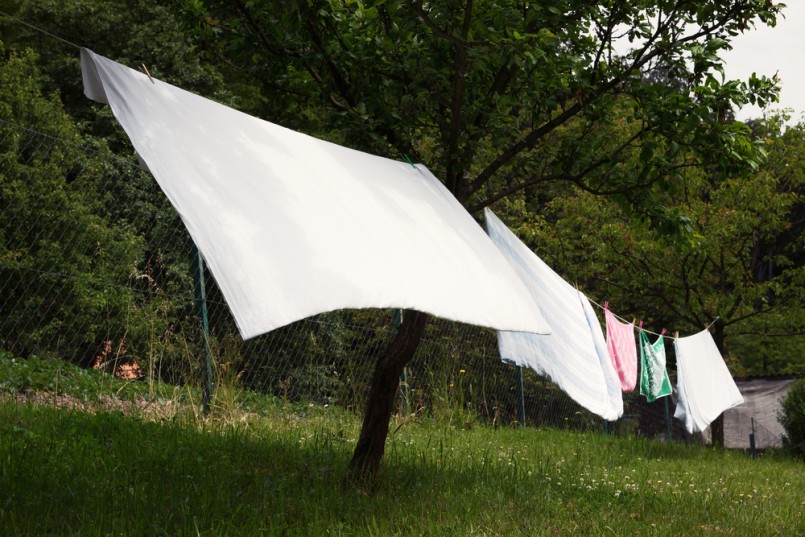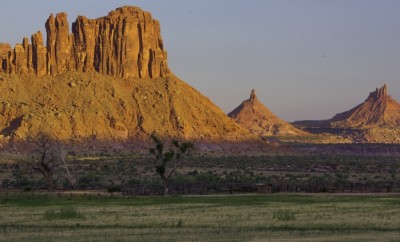Climate hero of the week
Climate hero of the week: The man who recruited his entire village to reduce carbon emissions

Image: Shutterstock/Pemaphoto
As we continue to see the effects of global climate change, it’s always heartening when we stumble across a story that shows how the general public bands together to help make a difference. Here at OutwardOn we are dedicated to honoring those who create innovative solutions to our world’s biggest climate problems. This week in Climate hero of the week we’re introducing the longtime resident of the small British village of Ashton Hayes, Gary Charnock, who recruited his entire village to become environmentalists.
Charnock didn’t exactly look or act the part of an environmentalist when he first began his mission of reducing carbon emissions and promoting sustainability amongst his neighbors. Nonetheless, when inspired by a speech he heard at the Hay literary festival in 2005, Charnock wondered how he and his neighbors could make a difference. Once he got the word out there, it didn’t take long for the enthusiasm to grow rapidly and fiercely among the locals. In fact, The New York Times even recognized the village of Ashton Hayes as a “case study for the next phase of battling climate change: getting people to change their habits.”
The village of approximately 1,000 has cut carbon emissions by 24% in the last ten years through common sense methods such as better use of insulation, clotheslines and using benevolence to band together to reach a common goal of changing their community for the better.
When asked about how they were all able to contribute so much to the effort so effectively, Charnock spoke with Curbed and provided a simple DIY plan for reducing carbon emissions that we can all take notes from in our own communities.
Find a common motivator
In regards to climate change, we are afraid of what the future could look like for our children and future generations to come. And while that in itself is some serious ammunition to continue fighting the culprits of climate change, Charnock doesn’t want us to forget more personal motivators, such as saving money, that can be very effective to the cause as well.
Charnock said that while the high stakes issues are key aspects to fighting the good fight, we cannot forget about the practical benefits that pay dividends in the short-term. Banding everyone together in a community effort to save money certainly motivated the community for the short-term to keep pressing on for the long-term.
Track your progress
Ashton Hayes made it a point to track their progress of reducing carbon emissions from the very beginning. Tracking is a key element in figuring out what methods are contributing to the effort and what methods needs to be altered. With help from Professor Roy Alexander at the University of Cheshire, the village was able to annually monitor and track carbon emissions. Alexander and his students took a baseline emissions audit, and followed up every year with an annual study to track carbon emissions.
Tell your friends
It’s a simple known fact—we tend to trust our neighbors experience rather than expert opinion. Charnock explained that being social and verbal in their methods of what worked and what didn’t was a great way for the collective effort to become more powerful. People in the community became experts in different areas, and their neighbors would come to them for help in their own homes.
“Suddenly, we had a village full of experts,” says Charnock. That’s quite the problem to have.
Let your actions speak for themselves
Charnock is not a believer in pushiness to help the cause. In his opinion, a welcoming community can deliver a welcoming message and therefore spread it more effectively. In his own words, “If I meet you in the street, and you thought this climate change campaign was a ridiculous idea, I’d say fine, whatever you want to do, if you want to help, we’ll chat.”
Campaigners in Ashton Hayes are big advocates of keeping a positive attitude and not delivering any negative connotation with their message.
Have fun with it
While successful, the Ashton Hayes effort doesn’t have the typical leadership structure one might expect from an organized environmentalist group. They are more concerned with a community style program in which neighbors band together and create a sense of fellowship while contributing to the effort.
“The key is having low key meetings and making it non-threatening. It’s about sharing information, giving them a little publicity on the website, and bringing people together. It really helps you get to know your neighbors.” Charnock explained when talking about these principles.
Work independently
The residents of Ashton Hayes didn’t keep politicians out of the loop to be spiteful, but rather to be practical. Politicians have a knack for looking at the short term, and this wasn’t a cause worthy of anything less than long-lasting change. Keeping politics out of the effort also negated any party affiliation issues in which other parties could potentially feel alienated from the cause.
Realize it can start anywhere, not just on rural ground
Many assume it is easier to contribute to such an effort with a small town or village, but that is not the case. What this shows us is that when a group of people find a commonality, the commonality can grow and prosper. It’s all about starting with a small group, and spreading the word gracefully and diligently. “Break things down into islands that have common causes,”Charnock says. “It could be based around a school, or a football team. Whatever bond gets people together.”
What may seem small from an outside perspective, Charnock could give you plenty of justification for why he highly disagrees with that sentiment. He’s happy to share that they’ve already received hundreds of requests to help in other cities’ attempts at contributing to the effort of lowering carbon emissions.
We thank Charnock and his fellow neighbors within the Ashton Hayes community for sharing such a powerful message through action, and showing us that small steps can lead to big change.





0 comments